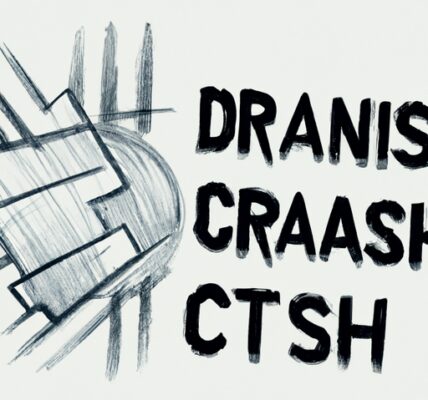In the competitive landscape of e-commerce, the ability to convert visitors into customers is pivotal. Conversion rate optimization (CRO) aims to enhance this process, ensuring that more users take desired actions on a website. While traffic acquisition is essential, maximizing conversion rates can significantly increase revenue without the need to attract more visitors. This article examines key strategies to improve conversion rates and showcases real-world examples that demonstrate their effectiveness.
Understanding Conversion Rate Optimization
Before diving into strategies, it’s crucial to understand what conversion rate means. It is the percentage of visitors who complete a desired action—such as making a purchase, signing up for a newsletter, or requesting more information. To calculate the conversion rate, divide the number of conversions by the total number of visitors, then multiply by 100. For instance, if an online store gets 1,000 visitors in a month and 50 of them make a purchase, the conversion rate is 5%.
Achieving higher conversion rates involves analyzing user behavior, improving website design, and testing various approaches. Let’s explore specific tactics that can effectively enhance conversions.
1. Simplify the Checkout Process
The checkout process can make or break a sale. Numerous studies have indicated that a complicated checkout is one of the leading causes of cart abandonment. According to the Baymard Institute, approximately 70% of online shoppers abandon their carts before completing a purchase. Simplifying this process can lead to more successful transactions.
For example, Zappos has streamlined its checkout process to minimize the number of steps required to finalize a purchase. By allowing guest checkout, offering multiple payment options, and ensuring transparency in shipping costs, Zappos dramatically reduces friction in the buying process.
2. Build Trust with Social Proof
Social proof is a powerful psychological phenomenon that influences buyers. When potential customers see that others have had positive experiences with a brand, they are more likely to make a purchase. Incorporating reviews, testimonials, and user-generated content can significantly boost credibility.
Amazon excels in this area by prominently displaying customer reviews and ratings for every product. Research by Spiegel Research Center indicates that displaying reviews can increase conversion rates by up to 270%. Showing genuine feedback fosters trust and encourages more visitors to convert into buyers.
3. Optimize for Mobile Devices
With mobile usage continuing to rise, an optimized mobile experience is critical for e-commerce success. Research by OuterBox shows that mobile accounts for 54% of all online sales. If the mobile experience is subpar, businesses risk losing potential customers.
Take the case of Nike, which invested heavily in mobile optimization. The brand’s mobile site is fast, easy to navigate, and features a seamless checkout experience. As a result, Nike reported a significant increase in mobile sales as more customers turned to smartphones for shopping.
4. Harness the Power of A/B Testing
A/B testing, or split testing, is an invaluable tool in the CRO toolkit. By comparing two versions of a webpage to determine which one performs better, businesses can make data-driven decisions that enhance conversion rates. This method allows brands to test elements such as headlines, call-to-action buttons, colors, and images.
For instance, the online retailer Etsy experimented with different layouts for product pages. By testing various arrangements and designs, Etsy was able to identify the version that led to higher sales, ultimately increasing conversions by a significant margin.
5. Enhance Product Descriptions and Visuals
Effective product descriptions are essential in persuading customers to click the “buy” button. Compelling, well-written copy that highlights benefits, features, and uses creates a connection with potential customers. Additionally, high-quality images or videos can help customers visualize the product, which is especially important in e-commerce where shoppers cannot physically handle the items.
Consider the success of Warby Parker, an eyewear brand that focuses heavily on its product descriptions and visuals. Warby Parker provides clear, engaging descriptions while showcasing its glasses with high-resolution images and videos. By providing comprehensive product information, the company improves customer confidence and boosts conversion rates.
6. Utilize Urgency and Scarcity Tactics
Creating a sense of urgency or scarcity can motivate consumers to make quick decisions. Limited-time offers, countdown timers, and low-stock notifications tap into the fear of missing out (FOMO), encouraging immediate action.
Online travel agency Booking.com effectively employs these tactics by highlighting limited-time deals and showing the number of people currently viewing a property. This strategy push consumers to finalize their bookings sooner rather than later.
7. Refine Your Call-to-Action (CTA)
A strong CTA is vital for guiding visitors toward their next step. The language used, placement, and design of CTAs can significantly influence click-through rates and conversions. Effective CTAs are clear, persuasive, and create a sense of urgency.
For example, Dropbox uses a simple yet compelling CTA that encourages users to “Sign up for free.” By making the action clear and inviting, Dropbox has successfully converted many visitors into registered users.
Conclusion
Conversion rate optimization is an ongoing process that plays a crucial role in e-commerce success. By simplifying the checkout process, leveraging social proof, optimizing for mobile, conducting A/B testing, enhancing product descriptions and visuals, employing urgency tactics, and refining CTAs, businesses can significantly improve their conversion rates. As the digital landscape continues to evolve, staying agile and focused on customer experience will be vital for sustained growth in the e-commerce sector.












